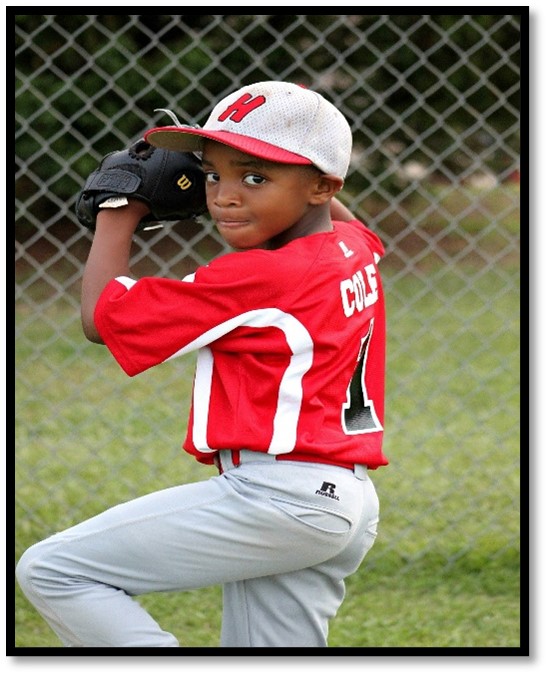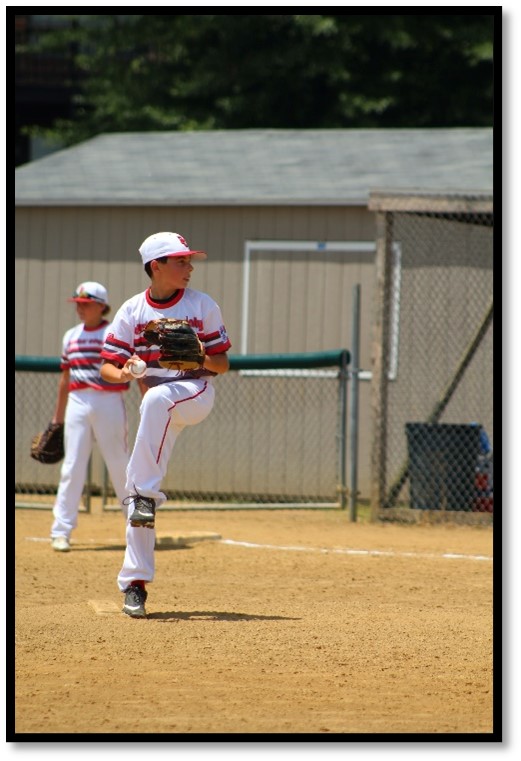02/22/2022
Injury Prevention for Baseball Pitchers
By Kyle Estell, PT, DPT, physical therapist at Wentworth Douglass Hospital
As the short days of Winter begin to fade and the days start to get longer, many of us begin to look forward to the Spring season. One of the most popular sports that seems to start in the Spring and continue into the Summer is baseball, America’s pastime. With the upcoming season, it is essential to prepare your body to allow for optimal throwing mechanics and volume to reduce your risk of repetitive stress injuries. Here are a few things to considerations to prevent throwing/pitching related injuries.

Did you know that 74% of pitchers, aged 8-18 years old, report pain with throwing? In addition, 21% of the injuries that are sustained in high school, pitchers are severe and require more than three weeks to return to sport. Unfortunately, one of the most popular injuries that a pitcher tries to avoid is damage to the inner part of the elbow, known as an ulnar collateral ligament (UCL) injury, and they are increasing at a 9.8% annual growth rate in adolescents ages 15 to 19 years old.
Previously, there has been a lot of focus on extrinsic risk factors such as pitch counts, innings pitched by season, months pitched per season, workload, playing on several teams, and participating in showcases. When broken down, pitching is a very complicated series of tasks that require a connection between our upper and lower body. For instance, the motion utilizes shoulder, thoracic, and hip rotation, all while trying to remain balanced. Focus on injury prevention must also include intrinsic factors that can help the overhead throwing athlete to optimize proper levels of mobility, stability, strength. Proper range of motion within the shoulder and hip girdles, mobility within the spine, and a critical balance seen between muscular power, endurance, and flexibility throughout the movement chain are essential.
One of the greatest things that a baseball player can do in the offseason is to complete an arm care exercise program to reduce injuries. Several benefits of these programs include managing and reducing the number of risk factors for injury, less upper extremity pain, and an improvement in pitching performance. All these potential benefits tend to catch the ear of our pitchers, which helps to improve their compliance with an arm care exercise program. In one study, 48.5% of pitchers who completed an arm care exercise program saw a reduction in the incidence of both shoulder and elbow injuries while managing a 2-mph improvement in their pitching velocity. One of the best arm care exercise programs that a pitcher can complete is the Throwers Ten Exercise Program (Please see attached PDF). The Throwers Ten Exercise Program helps to increase a player’s overall arm and shoulder girdle strength.
A lot of pitchers tend to tell their coaches and parents that they are fine and that their arm is not bothering them to continue playing. It is important to speak to your parents or coaches when your arm is tired or painful so they can get the proper assistance that you may need. Pitchers who regularly pitch with arm fatigue are 36 times more likely to sustain an injury versus those who rest when their arm is tired. There are several risk factors that may be present in a pitcher whose arm is tired or painful:
• Pitching while fatigued
• Throwing too many innings over the course of a year
• Not allowing enough rest time away from baseball
• Throwing too many pitches and not getting enough rest
• Pitching on consecutive days
• Playing for multiple teams
• Pitching with other body regions injured
• Not following proper strength and conditioning
• Throwing curveballs and sliders at a young age
• Radar gun use
Another way for a pitcher to reduce their chance of being injured is by following an arm care exercise program and by using pitch smart guidelines. There are different pitch smart guidelines based off a player’s age group that Major League Baseball (MLB) published. Below is the chart that parents and coaches can use to ensure their pitcher is not over doing it during the season. It is very important for a pitcher’s parents to know the pitch smart guidelines as there are times where their child may play on several teams in which the coaches do not speak to each other.
| Age | Daily Max (Pitches in a Game) | 0 Days Rest | 1 Days Rest | 2 Days Rest | 3 Days Rest | 4 Days Rest | 5 Days Rest |
| 7-8 | 50 | 1-20 | 21-35 | 36-50 | N/A | N/A | N/A |
| 9-10 | 75 | 1-20 | 21-35 | 36-50 | 51-65 | 66+ | N/A |
| 11-12 | 85 | 1-20 | 21-35 | 36-50 | 51-65 | 66+ | N/A |
| 13-14 | 95 | 1-20 | 21-35 | 36-50 | 51-65 | 66+ | N/A |
| 15-16 | 95 | 1-30 | 21-45 | 46-60 | 61-75 | 76+ | N/A |
| 17-18 | 105 | 1-30 | 21-45 | 46-60 | 61-80 | 81+ | N/A |
| 19-22 | 120 | 1-30 | 21-45 | 46-60 | 61-80 | 81-105 | 106+ |
For pitchers ages 9-12 years old, the major focus should be focused on their athleticism, physical fitness, and just having fun while playing. Typically, they should be pitching from 46-50 feet from the mound to the plate. For their safety, the pitchers should not exceed 80 combined innings pitched in a 12-month period. Also, they should have at least 4 months off from throwing every year with a minimum of 2-3 of those months being continuous. It is important for the pitcher, parents, and coaches to set and follow a pitch count and to follow the required rest periods. If a player is pitching at this age, it is recommended that they avoid throwing pitches other than fast balls and change ups, avoid playing for multiple baseball teams, and to avoid playing catcher while not pitching. The players should not pitch in multiple games on the same day or appear in a game as a pitcher for three consecutive days, regardless of their pitch counts. As always, it is important to monitor their arm for fatigue or pain.

For pitchers ages 13-18 years old, they can start to use breaking pitches after developing a consistent fastball and changeup. Typically, they should be pitching from 60 feet from the mound to the plate. For their safety, the pitchers should not exceed 100 combined innings pitched in a 12-month period. Also, they should have at least 4 months off from throwing every year with a minimum 2-3 of those months being continuous. It is important for the pitcher, parents, and coaches to set and follow a pitch count and to follow the required rest periods. If a player is pitching at this age, it is recommended that they avoid throwing pitches other than fast balls and change ups, avoid playing for multiple baseball teams, and to avoid playing catcher while not pitching. The players should not pitch in multiple games on the same day or appear in a game as a pitcher for three consecutive days, regardless of their pitch counts. As always, it is important to monitor their arm for fatigue or pain.
Most athletes, by nature, are very competitive individuals and are likely to return to sport as soon as possible, but it is important to listen to your body. When performing the exercises, such as the thrower’s ten exercises, they may experience a soreness and/or a dull, ache sensation in the muscles. If at any point in the strengthening exercises the pitcher experiences a sharp pain in their joints, and it does not appear to decrease, please stop performing the exercises and contact your physician or school athletic trainer. They will help determine if a referral to see a physical therapist to help them decrease their pain and return to sport is required.
Baseball is a fun team sport. By following a few of these simple guidelines, you will maintain your health and keep yourself on the field!
 Kyle Estell, PT, DPT is a physical therapist at Wentworth Douglass Hospital. Graduating from American International College in 2018 with his Doctorate in Physical Therapy, he was also a Division II men’s soccer player and the starting center back for the AIC Yellowjackets. His time as an athlete and now a PT have influenced his appreciation for the high demands that athletes place upon their bodies and what is required of them to achieve optimal movement and reduce risk of injury. He is currently seeing patients in our Lee Rehab clinic and loves to see a variety of patients with orthopedic and sports-related injuries at any age.
Kyle Estell, PT, DPT is a physical therapist at Wentworth Douglass Hospital. Graduating from American International College in 2018 with his Doctorate in Physical Therapy, he was also a Division II men’s soccer player and the starting center back for the AIC Yellowjackets. His time as an athlete and now a PT have influenced his appreciation for the high demands that athletes place upon their bodies and what is required of them to achieve optimal movement and reduce risk of injury. He is currently seeing patients in our Lee Rehab clinic and loves to see a variety of patients with orthopedic and sports-related injuries at any age.
Your opinion matters! We value your input and hope you’ll take a moment to review our newsletter and share your thoughts on future content. Please consider filling out this brief survey.